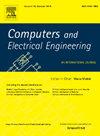物联网中的安全密钥协议:系统的文献综述和分类分析
IF 4
3区 计算机科学
Q1 COMPUTER SCIENCE, HARDWARE & ARCHITECTURE
引用次数: 0
摘要
对智能系统及其远程管理的日益依赖导致了物联网(IoT)的广泛采用。尽管有好处,但由于其异构组件,物联网引入了重大的通信安全挑战。密钥协议技术在通信双方之间建立对称加密密钥,对安全通信至关重要。然而,物联网设备的多样性和资源限制带来了持续的挑战。现有的密钥协议研究往往集中在具有特定条件和专门通信模型的设备上。由于这个原因,它们更广泛的适用性受到限制。本研究通过识别和编译物联网环境中关键协议算法的必要特征和条件来解决这一差距。我们使用系统文献综述(SLR)方法调查了关键的协议方法,以了解物联网中的不同方法。本文旨在对2016年至2024年发表的物联网关键协议方法的现有研究技术进行分类、分析和统计。基于当前研究的内容,我们提出了物联网中关键协议方法的三种技术分类。我们的研究结果表明,在当前的物联网密钥管理方法中,通信模型、基本资源和所需工具等关键参数往往被忽视。值得注意的是,审查的算法中只有2%是轻量级的,适合没有先决条件的设备到设备通信模型。这凸显了一个显著的差距,因为超过98%的现有算法要么无法满足物联网设备的当前要求,要么不容易在期望的环境中实现。本文章由计算机程序翻译,如有差异,请以英文原文为准。
Secure key agreement in IoT: A systematic literature review and taxonomy analysis
The increasing reliance on smart systems and their remote management has led to the widespread adoption of the Internet of Things (IoT). Despite its benefits, IoT introduces significant communication security challenges due to its heterogeneous components. Key agreement techniques, which establish symmetric encryption keys between communicating parties, are crucial for secure communications. However, the diversity and resource constraints of IoT devices present ongoing challenges. Existing studies on key agreement often focus on devices with specific conditions and specialized communication models. Their broader applicability is limited by that reason. This study addresses this gap by identifying and compiling the necessary features and conditions for key agreement algorithms in IoT environments. We survey key agreement methods to understand the different approaches in IoT using the Systematic Literature Review (SLR) method. This paper aims to categorize, analytically and statistically, the current research techniques on key agreement approaches in IoT published from 2016 to 2024. We present three technical taxonomies for the key agreement approaches in IoT based on the content of current studies. Our findings reveal that crucial parameters such as communication models, essential resources, and required tools are often overlooked in current IoT key management approaches. Notably, only 2% of the reviewed algorithms are lightweight and suitable for device-to-device communication models without prerequisites. This highlights a significant gap, as over 98% of existing algorithms either fail to meet the current requirements of IoT devices or are not easily implementable in the desired environment.
求助全文
通过发布文献求助,成功后即可免费获取论文全文。
去求助
来源期刊

Computers & Electrical Engineering
工程技术-工程:电子与电气
CiteScore
9.20
自引率
7.00%
发文量
661
审稿时长
47 days
期刊介绍:
The impact of computers has nowhere been more revolutionary than in electrical engineering. The design, analysis, and operation of electrical and electronic systems are now dominated by computers, a transformation that has been motivated by the natural ease of interface between computers and electrical systems, and the promise of spectacular improvements in speed and efficiency.
Published since 1973, Computers & Electrical Engineering provides rapid publication of topical research into the integration of computer technology and computational techniques with electrical and electronic systems. The journal publishes papers featuring novel implementations of computers and computational techniques in areas like signal and image processing, high-performance computing, parallel processing, and communications. Special attention will be paid to papers describing innovative architectures, algorithms, and software tools.
 求助内容:
求助内容: 应助结果提醒方式:
应助结果提醒方式:


